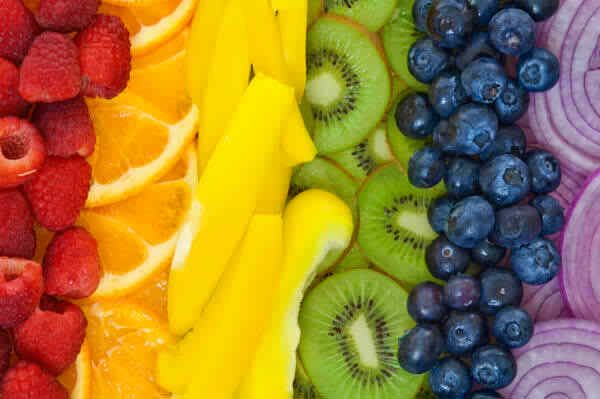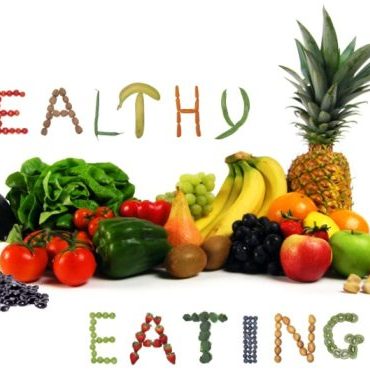 Your Health-Related questions were answered by our resident nutritionist
Your Health-Related questions were answered by our resident nutritionist
What are the different types of vegetarians?
There are different kinds of vegetarians, depending on what they eat. The definition of a vegetarian that’s most widely accepted by fellow vegetarians is a person who eats no meat, fish, or poultry. A vegetarian consistently avoids all flesh foods, as well as byproducts of meat, fish, and poultry.
Of course, vegetarian diets vary in the extent to which they exclude animal products:
Semi-vegetarian: Someone who’s cutting back on his or her intake of meat, in general. A pollo vegetarian avoids red meat and fish but eats chicken. A pesco Pollo vegetarian avoids red meat but eats chicken and fish.
These terms stretch the true definition of a vegetarian, and only the term semi-vegetarian is actually used with much frequency.
Lacto ovo vegetarian: A Lacto ovo vegetarian diet excludes meat, fish, and poultry but includes dairy products and eggs. Most vegetarians in the U.S., Canada, Australia and Western Europe fall into this category. Lacto ovo vegetarians eat such foods as cheese, ice cream, yogurt, milk, and eggs, as well as foods made with these ingredients.
Lacto vegetarian: A Lacto vegetarian diet excludes meat, fish, and poultry, as well as eggs and any foods containing eggs. A Lacto vegetarian would, however, eat dairy products such as milk, yogurt, and cheese.
Vegan: Technically, the term vegan refers to more than just the diet alone. A vegan is a vegetarian who avoids eating or using all animal products, including meat, fish, poultry, eggs, dairy products, any foods containing by-products of these ingredients, wool, silk, leather, and any nonfood items made with animal byproducts. Some vegans avoid honey.
One adaptation of a vegetarian diet is a raw foods diet, in which adherents eat a diet that consists primarily of uncooked foods. The fruitarian diet consists only of fruits; vegetables botanically classified as fruits, such as tomatoes, eggplant, zucchini, and avocados; and seeds and nuts.
Can I eat chilli during pregnancy?
Yes. It’s fine to eat spicy or hot food while pregnant or breastfeeding. And although a tiny fraction of what you ingest does go into your milk supply, it’s unlikely that eating spicy food will affect your baby.
Eating garlic may even be beneficial to breastfeeding. Two studies have shown that the babies of mums who eat garlic tend to feed for a longer time, and many babies seem to prefer a variety of flavours in breastmilk.
Go by trial and error. If you suffer from heartburn after you’ve eaten a fiery curry when you are pregnant, or your baby seems upset or irritable, then opt for a milder diet until she’s slightly older.
Women from parts of the world where spicy dishes are the cultural norm don’t make big changes to their diet when they become pregnant or are breastfeeding. The key is to stick to a healthy, varied diet, and avoid foods that make you feel uncomfortable.
What fish are oily and what is the best way to cook them to preserve their nutrients?
Eating oily fish twice a week is recommended for your overall good health, especially for your heart and blood. Oily fish varieties include small fish such as anchovies, sardines, herring and kippers as well as larger types like ocean tuna, Atlantic salmon, Spanish various mackerels, eel, trout, silver warehou, mullet, trevally, sand whiting and snapper. You don’t have to eat these fish fresh.
Frozen, smoked or canned are also good for the omega-3s, the long-chain fatty acids considered the active agents in oily fish.
Canned sardines, salmon and tuna are convenient and inexpensive. I like to keep a can or two in the kitchen cupboard for quick meals with a salad or sandwich. For canned tuna, check the label for a claim “High in omega-3” as many brands have had their natural oil reduced during canning.
Compared to white fish like bream, oily types are darker in colour, stronger in flavour with a high-fat content in their flesh (anywhere from 7 to 20 per cent compared to white at less than 3 per cent). But they have 5 to 6 times more omega-3 than white fish. Whilst these fats won’t lower cholesterol, they will keep the heart rhythm steady, the blood free-flowing and blood triglycerides down.
In addition, oily fish are rich in vitamin A and Vitamin D, a vitamin that is often hard to obtain from food alone (it is made by the action of sunlight on the skin but this process declines with age).
The best cooking methods are barbecuing, baking, steaming or lightly pan-frying as these don’t add extra fat (think extra kilojoules/calories). Heat does not affect the omega-3s, so they’re present in canned varieties as well as fresh.
Is coconut oil healthier than olive oil?
Olive oil has a reputation for being one of the healthiest oils to eat and cook with, but recently, coconut oil is gaining the same support within the health community. With each having its own benefits in the kitchen, here’s a guide on deciding which oil is best for your healthy cooking needs.
1 Tblsp olive oil 1 Tblsp Coconut oil
Calories 120 120
Total fat (g) 14 14
Saturated fat (g) 1 12
Cholesterol (mg) 0 0
When compared nutritionally, both coconut and olive oil contains 120 calories and 14 grams of fat per one-tablespoon serving; the significant difference being that coconut oil contains more saturated fat, primarily lauric acid. It is recommended to limit daily fat intake to 25 to 35 per cent of total calories consumed, and Saturated fat to less than 7%. If you’re going to eat saturated fat (especially if you have a history of heart issues or high cholesterol), limit your intake, and choose sources like dairy products or meat that also offer protein, calcium, and iron.
Wait a second — what about all the claims that coconut oil can cure obesity, cancer, and thyroid disease, lower your cholesterol, and boost your immune system? That’s just it, these amazing health benefits are just claims. Presently, there have been no large studies to support the benefits associated with using coconut oil in meals, and the health and medical communities remain divided. Until more evidence comes out, you may want to wait before cooking everything with coconut oil (but because of its higher smoke point, it might work well in certain instances). When possible, choose a bottle of heart-healthy olive oil. The main type of fat found in all types of olive oil is monounsaturated fatty acids, which offer proven health benefits including lowering cholesterol, which reduces the risk of heart disease.
If you’re vegan, coconut oil does make a great substitution for butter since it gives baked goods that same flaky, rich consistency and taste. But since it contains slightly more calories (20 more per tablespoon), it doesn’t exactly give you the go-ahead to devour an entire plate of just-baked vegan cookies.
Is it a problem to eat less than my recommended calories each day?
Strange as it sounds, going too low on calories is a common cause of getting stuck at your current weight despite dieting. Your body is designed to protect you from starvation during times of greatly reduced food availability, and when you eat too little, your body thinks it’s starving. To compensate, your metabolism will slow down considerably, making it very difficult (or impossible) for you to lose weight. In this state, your body will preferentially burn everything but your stored body fat. Eating too little poses other problems, such as nutritional deficiencies. On top of that, if you later eat more calories, your body is more likely to store these calories as fat, in preparation for a possible “famine” again in the future.
Your best bet is to aim for a weight loss of ½ kilo per week by combining a moderate calorie reduction with increased calorie expenditure through exercise. Some people have problems eating enough calories when they go too low on fats—especially by always choosing low-fat or non-fat versions of common foods. So try to find some good sources of “healthy fats” (the monounsaturated fat in nuts, olive and canola oils, avocados, etc.), and foods high in Omega-3 fatty acids, like flaxseed, salmon, or tuna.

